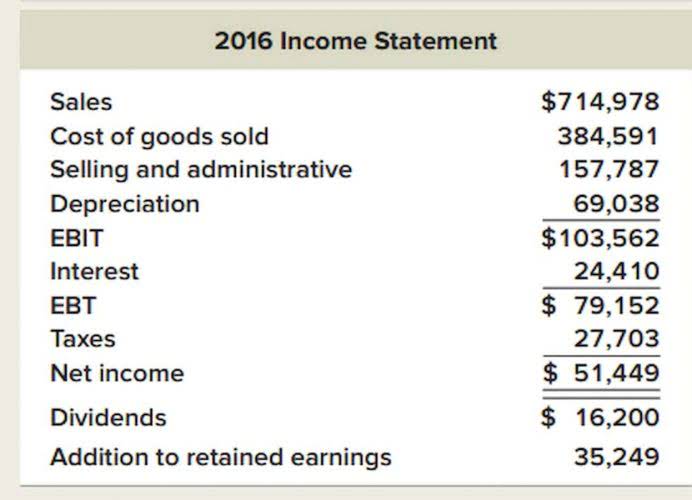
The taxpayer must attach the original, signed Form 3115 to their timely filed federal income tax return for the year in which the accounting method change takes effect. This includes filing by the original due date or the extended due date of the return. The calculated Section 481(a) adjustment must be Budgeting for Nonprofits reported on the form, showing the net amount and whether it is positive or negative. The form also requires a breakdown of the adjustment’s components, such as accounts receivable and accounts payable. Attaching a separate statement that shows the calculation of the adjustment is a common practice. When changing from the accrual to the cash method, a business must calculate a Section 481(a) adjustment.
Explanation of accrual basis accounting and its benefits
To convert your accrual books to the cash basis, you need to add any unearned revenue to your net income. This is because you’re then recording a debit to expense and a credit to AP, hence no cash is transacted. It wouldn’t be anything recorded as an expense for the cash method, but under the accrual method, it would decrease your net income. It’s crucial to note whether the AP and AR balances are increasing or decreasing. A current liability account that reports the amounts owed to employees for hours worked but not yet paid as of the date of the balance sheet.

Tax filing
This avoids paying taxes on income not yet received or deducting expenses not yet paid. Overall, converting from accrual basis to cash basis accounting requires attention and knowledge of both methods. By adjusting financial statements and reconciling differences between accruals and cash flows, businesses can see a precise representation of their financial position. To convert from accrual basis to cash basis accounting, it is vital to recognize unearned revenue or prepaid expenses.
Understanding the Basics of Cash and Accrual Accounting
Gains and losses from investing and financing activities, like asset sales, are also adjusted to ensure the cash flow statement reflects operational liquidity. To convert from cash basis to accrual basis accounting, follow the steps noted below. The formulas used above deal with the most frequently encountered situations when converting accruals based revenue and expenses to cash receipts and payments. Consider a small automobile repair business that wants to move to the cash method.


Switching to the cash method means income is reported only when payment is received, and expenses are deducted only when they are paid. This change can simplify bookkeeping and align tax payments more closely with cash flow. When managing taxes, businesses often face the challenge of adjusting from an accrual accounting basis to a cash basis for tax reporting. As an entrepreneur or financial professional, understanding this transition is essential, as it impacts how you report income, expenses, and ultimately, your tax liability.
- If you tried to separate them, you’d likely face rejection of the form or potential audit issues later.
- This documentation will not only support the accuracy of your financial records but also provide clarity for future audits or reviews.
- They also ensure consistent and error-free recording of transactions, leading to more reliable financial statements.
- The adjustment is a one-time reconciliation of the differences between the two methods as of the beginning of the tax year of the change.
- Form 3115, Application for Change in Accounting Method, must be filed to request this change.
- Depending on which method you use, you recognize transactions at different times.
How to Convert from Accrual Basis to Cash Basis of Accounting?
For the conversion to cash accounting, these sales from previous periods must be converted from accrual accounting to cash accounting. Accounting is the backbone of all business, and a crucial aspect of it is the method used to record financial transactions. Accrual and cash basis are two popular methods of accounting, each with its advantages and disadvantages. While Accrual basis accounting records transactions when incurred, cash-basis accounting records transactions when payment has been made or received. Many businesses use accrual basis accounting, but some may switch to cash basis accounting for simplicity or tax purposes. Converting from cash basis to accrual basis accounting requires recording adjusting journal entries.
The accrual to cash conversion excel worksheet works out the cash payments for inventory purchases based on the cost of goods sold for the period. As the goods or services are consumed over time, allocate the expense accordingly. For example, if a company prepaid for a one-year insurance policy, divide the total insurance cost by 12 to calculate the monthly expense. Each month, create a journal entry by debiting the Insurance Expense account and crediting the Prepaid Expenses account to recognize the portion of the prepaid expense that has been used. Similarly, accrued liabilities and wages also need to be adjusted when converting to accrual accounting. To account for these expenses, analyze wage records to determine the amounts owed to employees.

Capital expenditure account
The profit and loss account focuses on net income determination from operating activities. However, it does not show cash inflow and outflow relating to operating activities because the profit and loss account is prepared on accrual basis. In preparing profit and loss account, revenues are recorded even though cash for them has not been received. Another important point is this one, as we have seen AR is a fundamental part of any accounting book so you’ll also want to adjust accounts receivable during this transition. In the case that your company receives the payment for sales after the reporting period ends, make sure to write off any outstanding accounts receivable. This keeps your records accurate and reflects the actual cash you have on hand.
- Without them, discrepancies in income reporting could result in overstated or understated taxable income.
- Accrual accounting is a method that records revenue when it is earned, meaning when a product or service has been delivered to a customer and there is a reasonable expectation of payment.
- These entries help capture transactions that were not previously recorded under the cash basis system.
- Cash basis accounting records revenue and expenses when actual payments are received or disbursed.
- This method is commonly used by small businesses, as it makes managing cash flow quite simple.
Switching to cash basis accounting can impact taxable income by deferring income recognition and accelerating expense recognition, potentially lowering taxes in the short term. This transition requires filing Form 3115, Application for Change in Accounting Method, with the IRS. The form outlines adjustments under Section 481(a) of the Internal Revenue Code to prevent income duplication or omission. Accrual accounting provides a more stable financial picture by smoothing earnings over time, while https://cogdina.com/what-is-break-even-analysis-concept-formula-and/ cash basis reflects the actual cash flow, which can result in more fluctuating financial results.
- Unearned revenues, also known as deferred revenues, refer to advances or prepayments from customers for goods or services that have not yet been delivered.
- These represent money owed to you for services or goods delivered but not yet paid for.
- During this critical transition, it is important to maintain accurate adjustment records to comply with tax regulations and accounting standards such as GAAP.
- This guide details the necessary one-time adjustment for a proper tax filing.
- For example, Schedule A of IRS Form 1120 includes a reconciliation section for taxpayers who change their accounting methods, including moving from accrual to cash.
There are also many non-cash items in accrual accounting for which the value cannot be precisely determined by the cash earned or paid, and estimates need to be made. The entries for these estimates are also adjusting entries, i.e., impairment of non-current assets, depreciation expense and allowance for doubtful accounts. For costs paid in advance, such as insurance or rent, it’s essential to allocate these amounts over the periods they cover. This practice guarantees your monetary reports precisely indicate the costs in the pertinent accounting periods, following accrual accounting principles. Establishing a rigorous approval procedure and demanding appropriate paperwork, such as receipts or invoices, can further substantiate these costs, improving the precision of monetary accrual to cash adjustment reports.

